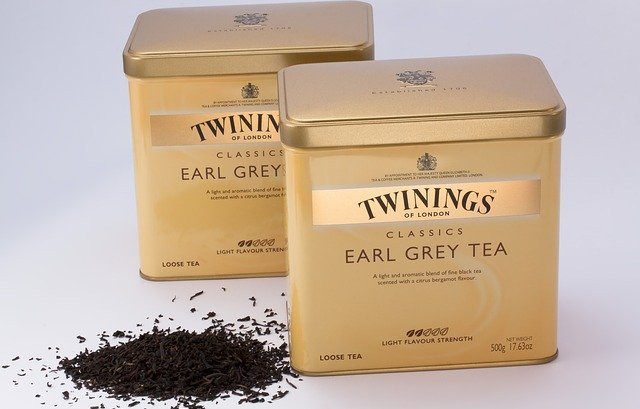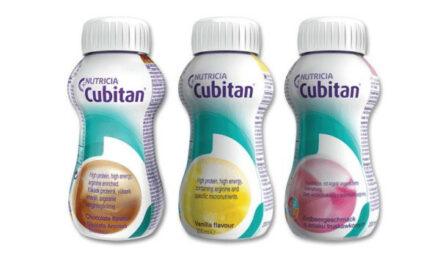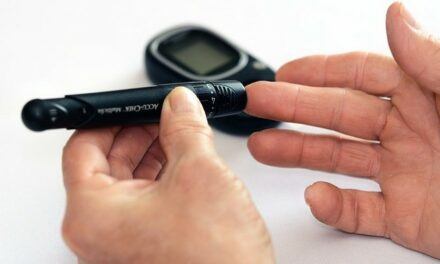In this article, we will learn about one of the popular types of tea, the so-called Earl Grey Tea. For example, how would Earl Grey tea affect diabetes? Is Earl Grey Tea good for diabetics? Or is it bad compared with other main types of teas?
Let’s find out…
Being diagnosed with diabetes doesn’t mean that is the end for you. You can still live your life to the full. All you need to do is to make some lifestyle changes that will help in managing the condition, reduce the risk of the complications of diabetes and live a long and healthy life. One of the ways to manage diabetes is by making lifestyle changes that can help you to balance your blood sugar level and reducing other factors that increase the risk of diabetic complications (e.g. high blood pressure, high level of cholesterol and obesity). The lifestyle changes you need to make include taking your prescribed medications, exercising, eating and drinking healthy (for example, avoiding food and drinks packed with sugar and a lot of calories).
Tea is one drink aside from water that is not just loved by most people across the globe but is also considered a healthy drink. This drink is full of flavonoids and other healthy substances which helps to improve the function of the metabolic system and have the potential benefits for diabetic patients.
Tea contains polyphenols, an antioxidant found in plants. It believed to improve insulin sensitivity, reduce oxidative stress, reduce blood pressure by causing vasodilation and reduce cholesterol, thereby reducing the risk of heart disease which is more prevalent in diabetic patients. Polyphenols in tea also help to increase insulin sensitivity and balance the blood sugar level.
What is Tea?
Tea is a beverage produced by steeping the cured or fresh leaves or leave buds of the tea plant (camilia sinensis) in hot water. This tea plant is an evergreen shrub native to South Asia. This drink is the most widely consumed drink aside from water.
Types of Tea
There are different types of tea, but the two main varieties of tea are;
- Ceylon tea plant (c. sinensis sinensis) which are small-leaved tea plants
- Assam tea plant (c. sinensis assamica), large-leaved tea plants
These two varieties of tea plant also have hybrids.
Classifications of Tea
Other ways of classifying tea is;
- Based on their place of origin
Tea can be classified based on their region of origin such as Sri Lanka (formally Ceylon), China, Indonesian, Darjeeling, African, Japanese. And then Ceylon tea can be further classified to Assam Tea, Uva Tea, and Dimbula Tea in Sri Lanka.
- Based on the size of the processed leaves
We have
1. Larger leafy grades: which are obtained mainly from the matured leaves which are tougher.
2. Smaller broken grades: which comes from the tender shoot. 95 to 100 per cent of the tea produced belongs to this grade because it produces a quick brew.
- Based on the process used for manufacturing the tea
The tea leaves can also be classified as fermented (black), unfermented (green, white and yellow) and semi-fermented (oolong) based on the process used to produce it.
To produce the quality of tea that is peculiar to any of this type of tea, the tea leaves have to undergo all or some of these stages of production which are withering, rolling, drying and in case of black tea, fermentation.
Tea has a stimulating effect as a result of its caffeine content.
One teacup of tea contains about 60 to 90 milligram of caffeine. The caffeine content in the tea does not contribute much to the taste, color or aroma.
Tea also contains Polyphenol (tannins), which is the most important chemical in tea and from which it derives its health benefits. This substance, Polyphenol, is colorless and tastes bitter, and it is what gives this beverage its astringency.
What is Earl Grey Tea?
This is one of the most recognized flavored teas in the western world, especially in Europe and the British Isles. It is basically a black tea flavored with bergamot essential oil or rind of the bergamot orange.
Bergamot orange is a citrus fruit that grows primarily in Calabria, Italy, south of France, Cote d’Ivoire, the Southwest United States and south of Turkey. This citrus fruit is believed to be a hybrid of sweet lemon and Seville orange. It is almost the same size and shape as an orange but with a yellow-green skin as a lemon.
The classic Earl Grey tea is basically made of black tea leaves although one can still get it to blend of white, green and oolong teas.
History of Earl Grey Tea
Earl Grey tea is believed to be named after the late British Prime Minister, Charles Grey. He was the 2nd Earl of Grey and the Prime Minister of England between 1830 and 1934.
There are different version of how this tea came about but according to one of the legends, a Chinese mandarin who was a tea blender presented this blend of tea as a token of appreciation for saving his son from drowning.
How is Earl Grey Tea Different From Other Teas?
With the different types and varieties of teas available out there, you may be wondering what makes Earl Grey Tea special or unique. Although Earl Grey tea traditionally was basically a flavored black tea, occasionally one can still get it to blend of green tea or oolong.
Earl Grey tea contains almost the same amount of caffeine and similar benefits as other black teas. What makes this tea different from other teas is, it bergamot extract in it which gives it a delicate aroma and a unique citrus taste.
Tip: Bergamot is available as an Essential Oil, for example, is one of the doTERRA Essential Oil range.
How is Earl Grey Tea Made?
Basically, this bergamot flavor tea is flavored in two ways.
- To get earl tea with a stronger citrus flavor, the tea leaves are sprayed with bergamot essential oil or extract from the rind of the bergamot fruit.
- By adding dried bergamot rinds to dried tea leaves for infusion.
You may have noticed that the taste of earl grey may vary depending on the brand. This is because there is no singular way of making this tea.
The taste of this tea varies depending on…
- The type of tea used
Traditionally, earl grey tea is made basically with black tea leaves. These black tea leaves can be any of the black teas from Ceylon, Indian or African. It can also be a blend of black teas from around the rest of the world. Since the flavor of black tea can vary from rich, sweet or floral depending on the source of the tea plant (e.g. its region of origin) and the method used to process the tea leaves.
Also, taste too can vary depending on if other types of tea leaves like green tea, oolong and white tea leaves are used instead of black tea leaves.
- The type of bergamot flavor used
Both natural and synthetic bergamot can be used to flavor earl grey tea. Most manufacturers prefer to use synthetic bergamot because of its consistent flavor. The synthetic bergamot does not contain any actual citrus, so, those that are allergic to citrus can safely consume it.
The flavor of natural bergamot is sharp and intense. The taste of earl grey tea flavored with natural bergamot can vary depending on its source and the method used to process it.
- The quantity of bergamot used
Different Types and Variations of Earl Grey Tea
Earl Grey Tea is not a registered trademark. There are different blends of this tea, depending on the manufacturer. One of the most popular ones is Lady Grey, which is the blend of earl grey with the blossoms of blue cornflowers.
Other popular variations of earl grey tea are:
- Russian Earl Grey
A blend of earl grey tea mixed with pieces of citrus peel and lemongrass.
- Green Earl Grey
A bergamot flavored green tea
- Earl Red or Earl Rooibos
A bergamot flavored rooibos
- Decaf Earl Grey
- Oolong Earl Grey
A bergamot flavored oolong tea
- Earl White
A bergamot flavored white tea
There are other variations of Earl Grey with names such as Lord Grey or Mademoiselle Grey. They are blends of Earl Grey mixed with flowers such as lavender or petals of the rose, spices or other ingredients.
The Nutritional Content of Earl Grey Tea
1 serving size of Earl Gray tea of 29.7 gram and contains the below.
|
Calories |
0.3 K |
|
Total fat |
0 mg |
|
Cholesterol |
0 mg |
|
Sodium |
0mg |
|
Total carbohydrate |
0.1 mg |
|
Protein |
0 mg |
|
Potassium |
6 mg |
|
Calcium |
0 mg |
|
Iron |
0 mg |
|
Caffeine |
5.9 mg |
Health Benefits of Earle Grey Tea
- Lowering blood pressure
It has been proven that black tea has a blood pressure-lowering effect.
This can help in reducing the risk of cardiovascular disease in people with hypertension.
- Lowering blood cholesterol
Studies have shown that bergamot extract has a cholesterol-lowering effect.
Drinking Earl Grey tea can lower both bad cholesterol and total cholesterol because of the bergamot extract in the tea.
- Reduce the risk of heart diseases
It can help to improve blood circulation in the body by increasing vasodilation and reducing the risk of clotting.
- Weight loss
Research has shown that polyphenols in black tea can aid weight loss by inhibiting fat digestion, promoting fat metabolism and lowering oxidative stress, preventing obesity.
- Hydrates and boost energy
This tea can keep you hydrated throughout the day, and it contains caffeine which can help boost your energy.
- Improve digestion
It enhances food digestion, relieves constipation, indigestion and nausea.
- Boost immunity
The bergamot oil in the tea contains antioxidant that helps fight harmful free-radicals and fight infection.
- Fight bad breath and prevent tooth decay
The polyphenol in black tea can kill the bacteria that cause bad breath. Black tea also contains fluoride, which helps to protect the tooth from tooth decay.
- Relieve stress and anxiety
You can take this tea as a natural solution if you under stress or having anxiety. The bergamot oil in it is known to have a calming effect in the body.
How Earl Grey Tea Affect People with Diabetes?
Earl gray tea is one of the perfect tea for diabetics. It is best taken without milk or sugar. The black tea helps to reduce blood sugar and accordingly several studies confirmed that it can also improve insulin sensitivity which causes type 2 diabetes.
It reduces the risk of cardiovascular and heart diseases because the bergamot oil in it helps to reduce bad cholesterol and blood fat which increases the risk of developing high blood pressure/hypertension.
Although the black tea goes through processes of fermentation, it contains polysaccharides that have a similar effect like some of the diabetic drugs. This polysaccharides block alpha-glucosidase, an enzyme that converts sugar to glucose. It also has anticancer and antiviral properties.
Diabetics are prone to oral infection, periodontitis. Earl Grey tea contains florid, which helps to fight tooth decay and also black tea contains a high amount of catechin which helps to fight oral infection.
Stress can affect the blood sugar level. The bergamot in Earl Grey tea has a calming effect which can help to relieve anxiety, depression and stress and by reducing the stress level, one can have better control of the blood sugar level.
Diabetic patients are at higher risk of a few kinds of cancer such as liver cancer, pancreatic cancer and endometrial cancer. Some studies suggest that black tea can reduce the risk of cancer because of its antioxidant properties.
Most diabetics tend to be overweight, and this tea can help in weight loss initiative.
Is Earl Grey Tea Good for Diabetics?
Seriously, if you really want to know the answer to this question, then the answer is yes! Yes!! And yes!!! Earl grey tea is very good for diabetic patients since it can help to regulate the blood sugar level and improve insulin sensitivity which is the major cause of diabetics. And also, it can help reduce the risk factors that cause diabetics complications such as high blood cholesterol and fat, high blood pressure, oxidative stress and obesity.
Tip: Read here about Peppermint Tea and Diabetes.
When is Earl Grey Tea Bad for Diabetics?
Earl Grey tea is bad for diabetics when artificial sweeteners or sugar is added to it. This is because sugar can spike the blood sugar level, which is one thing the diabetic is trying to control in the first place.
Also, it is not advisable to take this tea if you are taking any blood thinners because black tea reduces blood clotting and increase the risk of bleeding and bruising.
You should avoid earl grey tea if you are anaemic or on any medication that can interact with bergamot extract.
The Possible Side Effect of Earl Grey Tea
It is not advisable to drink more than 5 to 6 cups of Earl Grey tea in a day because it contains caffeine and too much of caffeine can cause
- Headache
- Dizziness and confusion
- Irritability
- Vomiting
- Restlessness
- Nervousness
- convulsion
- Irregular heartbeat
- Insomnia
- Diarrhea
In some cases, caffeine overdose can worsen or result in the following serious condition:
- Increase the blood pressure
- Glaucoma
- Seizure
- Irritable bowel syndrome
The flavonoids in the tea can inhibit the absorption of iron in the body.
The bergamot in earl grey tea contains some compounds that can interfere with the body’s ability to absorb potassium. This can result in severing muscle spasm and cramps. It can also result in blurry vision or pressure in the eyes.
Although Earl Grey tea is good for oral hygiene, it can stain your teeth when you consume too much of it. This is because earl grey tea is a black tea and just like every other tea, it contains a substance known as tannins which causes the stain on the teeth.
Pregnant women should not take more than 2 cups of this tea because studies have shown that black tea can cause miscarriage and in some cases caffeine withdrawal in children
How Should Diabetics Prepare Earl Grey Tea?
This tea is simply prepared, just like every other black tea. One can enjoy earl grey tea as it is or can add milk, sugar, honey or lemon to it.
For diabetics, the best way to take is to drink this tea without sugar or milk because you don’t need to add more calorie to the drink or spike up your blood sugar level by adding more sugar. But you can add lemon to the tea or a dash of honey to sweeten it a little bit.
Steps to brew a perfect cup of earl grey tea is;
- Add 1 or 1.5 teaspoons of loose Earl Grey tea or 1 teabag of Earl Grey tea to 1 cup of hot water
- Steep it for 4 to 5 minutes.
- Remove the tea leaves or tea bags and enjoy.
When preparing this tea, do not steep for too long because the tea leaves will release tannins into the water and this will make the tea taste bitter. Instead of hot water, you can also brew it in cold water by steeping the tea in cold water for 12 hours.
Conclusion
Earl Grey tea is highly revered by many, not only for its unique taste but for its numerous health benefits.
This drink has no added sugar or calorie and is healthier than sodas, beverages, herbal drinks or energy drinks. Also, you can use this tea as a substitute for coffee, especially if you are trying to reduce your daily caffeine intake.
Although there are a few side effect of over-consuming this drink, there are a number of research on the potential health benefits of taking this tea and evidence that this drink can help with some serious health conditions such as diabetes by helping to regulate the blood sugar and reducing the factors that increase the risk of diabetes complications such reducing blood cholesterol, oxidative stress, high blood pressure and obesity.









